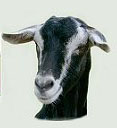|
Getting your first horse or pony
|
Delayed Stopping A horse with delayed stopping is classified as one who, after you give cues to stop, will keep moving forward taking longer to come to a complete stop. Keep in mind that if you have your horse going at a high speed it may take longer for a complete stop because of there forward momentum, but most if not all horses are capable of stopping right away. The Stopping Game Step 1 Step 2 Step 3 Step 4 Step 5 Step 6
When you are capable of doing these steps at a walk then try it at a trot. Your goal is to have your horse responding with the first cue of saying "whoa". By allowing your horse a couple seconds between each cue you are teaching him that if he does not stop right away then pressure will be increased. Horses do not enjoy having their mouths pulled on or any pressure there, which is why they will soon learn that stopping before the pressure is the best option :). This process will take different amounts of time for each horse so be patient. Only do this drill for roughly 10-15 minutes at a time to ensure you do not mentally overwork your horse. Then move on to something else.
Horse Behavior | Horse Training | Horseback Riding | Horses | Riding Styles | Riding History
|
||||
|---|---|---|---|---|---|
The Material contained herein may not be reproduced without the prior written approval of the author. Contents & Graphics Copyright © Horses With Amie (C) 2006-. All Rights Reserved. Our work is not Public Domain. |

